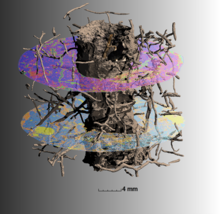Soil structure formation during landscape and agricultural reclamation
Evelin Pihlap
Brown coal (lignite) is often mined in deep open-cut mining pits with areas of several square kms and depths of more than 200 m. During large-scale excavations, the landscape is destroyed beyond recognition, and the soil must be reclaimed in order to restore its agricultural potential. In western Germany, the reclamation procedure uses the loess overlying the coal layer as a new substrate for initializing soil formation. This loess (windblown sediment) is agriculturally poor in terms of soil structure, chemistry and biology, and developing it into an agriculturally viable soil is a complex biogeochemical process. Successful reclamation requires not only establishing sufficient soil fertility, but also ensuring stable soil structure and functionality, which are needed for maintaining agricultural potential. In this talk, I will present a study on agriculturally reclaimed sites in Garzweiler (Germany), where fields with six different soil formation stages (0, 1, 3, 6, 12, and 24 years after the first seeding of alfalfa) were selected to examine soil formation factors along with ongoing biogeochemical processes. Soil management strategies influenced the dynamics of organic carbon (OC) in young soils, which was linked to the formation of macroaggregates. It became evident that limited organic matter input (i.e., crop and root residues) could not sustain stable soil OC content and macroaggregate formation when tillage was introduced. We also did not observe correlations between CaCO3 (sourced from loess) and soil OC in any aggregate size class. This revealed that, in contrast to theoretical expectations of how soil aggregates form, clay- and silt-sized particles mostly interacted only with inorganic carbon to form microaggregates, while soil organic matter largely bound together in the formation of macroaggregates.
